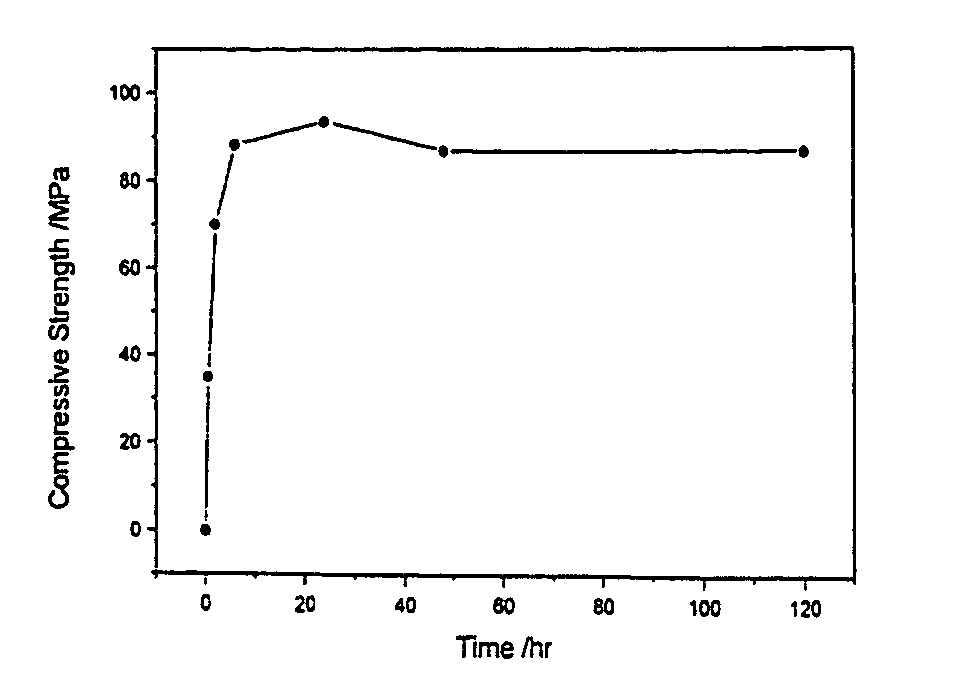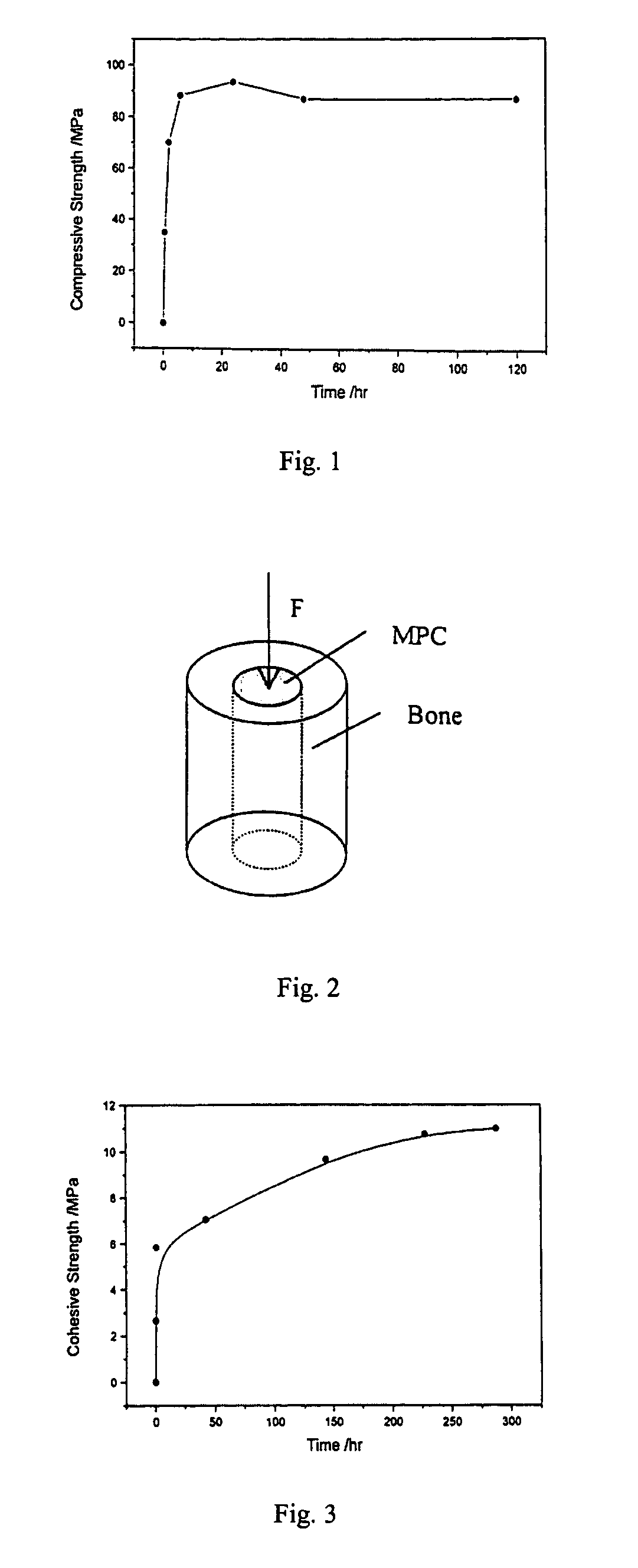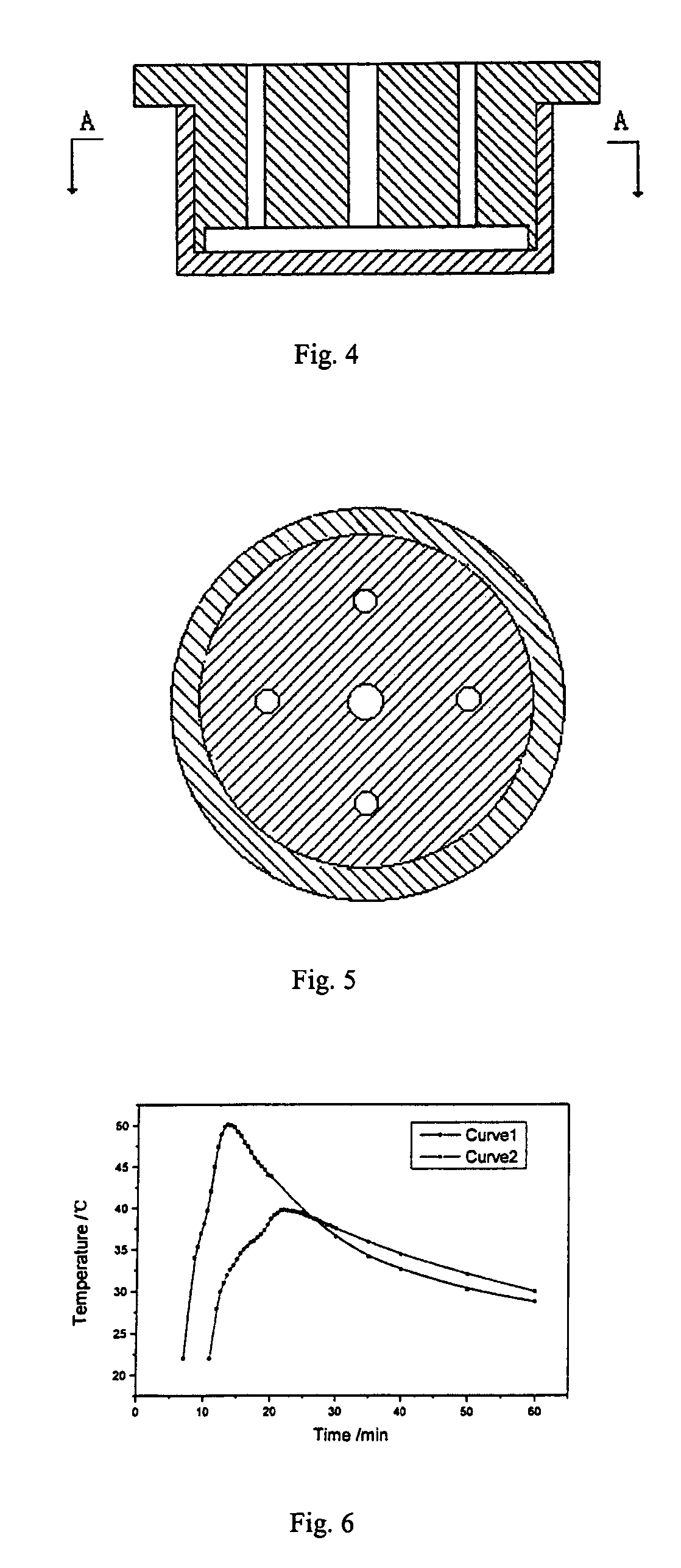Inorganic bone adhesion agent and its use in human hard tissue repair
a technology of inorganic bone and adhesive, applied in the field of biomedical materials, can solve the problems of affecting the therapeutic effect and functional restoration of patients, affecting the patient's pain and economic burden, and bringing extra pain and economic burden to patients, and achieves excellent biocompatibility, high early strength, and beneficial recovery
- Summary
- Abstract
- Description
- Claims
- Application Information
AI Technical Summary
Benefits of technology
Problems solved by technology
Method used
Image
Examples
example 1
[0064]The dried reactive MgO powder with the diameter less than 10 μm was mixed with the dried ammonium dihydrogen phosphate by the ratio of 1:1 (weight ratio) to form the inorganic bone adhesive powder with the characteristics of the hydration and adhesion. The powder was then mixed adequately with the retarder by the ratio of 10:0.05 (weight ratio). The powder was then evenly mixed with the saline by the ratio of 4.5:1 (weight / volume) to form the slurry, which subsequently was implanted into the body. When the adhesive was planted in vivo as an inorganic bone adhesive, the method should be followed as described above.
example 2
[0065]The dried reactive MgO powder with the diameter less than 10 μm was mixed with the dried ammonium polyphosphate by the ratio of 10:5 (weight ratio) to form the high-active inorganic bone adhesive powder with the characteristics of the hydration and adhesion. The powder was then mixed adequately with the retarder by the ratio of 10:0.5 (weight ratio) or the retarder could also be dissolved in a liquid at the same ratio. The powder could also be mixed adequately by the ratio of 4:1 (weight / volume) with the saline to form the slurry, which subsequently was implanted into the body. When the adhesive was planted in vivo as an inorganic bone adhesive, the method should be followed as described above.
example 3-4
[0066]The powder in example 1 or example 2 was mixed with the calcium phosphate bone cement powder by the ration of 10:1 (weight ratio) to form the mixed inorganic bone adhesive. The saline was added into the powder to form the slurry, which subsequently was implanted into the body. When the adhesive was planted in vivo as an inorganic bone adhesive, the method should be followed as described above.
PUM
| Property | Measurement | Unit |
|---|---|---|
| weight percent | aaaaa | aaaaa |
| weight percent | aaaaa | aaaaa |
| weight percent | aaaaa | aaaaa |
Abstract
Description
Claims
Application Information
 Login to View More
Login to View More - R&D
- Intellectual Property
- Life Sciences
- Materials
- Tech Scout
- Unparalleled Data Quality
- Higher Quality Content
- 60% Fewer Hallucinations
Browse by: Latest US Patents, China's latest patents, Technical Efficacy Thesaurus, Application Domain, Technology Topic, Popular Technical Reports.
© 2025 PatSnap. All rights reserved.Legal|Privacy policy|Modern Slavery Act Transparency Statement|Sitemap|About US| Contact US: help@patsnap.com



